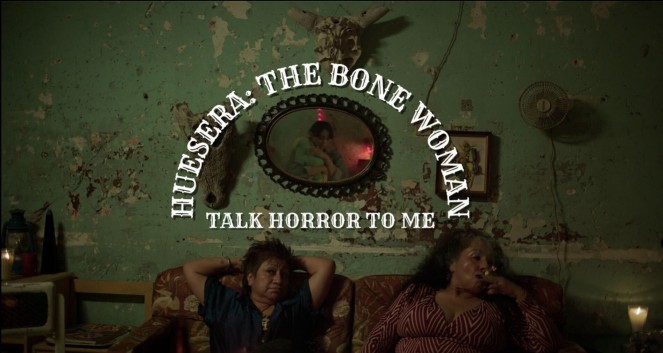In “Talk Horror to Me,” columnist Emma Kexin Wang ’24 reviews horror, psycho thrillers and all things scary released in the past few years.
Editor’s Note: This article is a review and includes subjective thoughts, opinions and critiques.
With a 97% rating on Rotten Tomatoes, Michelle Garza Cervera’s acclaimed directorial debut “Huesera: The Bone Woman” (2023) explores clashing ideals of motherhood through a fresh take on maternal body horror.
Valeria (Natalia Solián), after the initial excitement of her pregnancy, becomes increasingly hesitant, develops postpartum depression and begins to be plagued with a supernatural entity that contorts its body in bone-crushing ways. To rid herself of this curse, Val visits an exorcist, who promises an ultimate solution that comes at a heavy price.
The sound of cracking dominates the film’s sound design. As a means to relieve her increasing stress, Valeria ritually cracks her knuckles, much to the admonishment of her family and husband, Raúl. Childbirth is described by a character as “literally feel[ing] like your bones are breaking.”
Despite the bone-chilling cracking sounds that announce the entity that plagues Valeria, the horror of “Huesera” is ultimately quiet. After a flashback sequence that reveals Valeria’s punk, shaved-head teenage self choosing to attend college instead of running away with her ex-girlfriend Octavia, Val’s predominant internal struggle with motherhood is revealed: Her past self screams out against the married life she ultimately chose.
This tension between Valeria’s queerness and her current heterosexual, domestic relationship is further complicated by her discomfort with children. When Val announces to her family that she is pregnant, she is greeted by trepidation among the polite congratulatory remarks. At the dinner table, her sister jokes about the time that Val had dropped their neighbor’s child down the stairs while babysitting, causing the child to be a “little dumb.” Despite the insensitivity of the joke, everyone laughs, even Val’s husband Raúl. All except Val and her aunt who, because of her unmarried status, remains the other social outcast in the family.
Val’s personal struggle with motherhood is never outwardly spoken, but mostly portrayed through her expressions and her interactions with children. In several scenes, the audience is invited to commiserate with Val — as children stare creepily at her with a menacing backtrack, as her niece and nephew disobey her and cruelly bring up their “dumb neighbor” and as the continuous cries of her own child almost induce Val into a panic attack. Without such small but intense moments of spectacular performance by Solián, the movie runs the risk of seeming too simple, the plot too straightforward.
The simultaneous comfort and entrapment of motherhood is symbolized through a weaving motif. In preparation for the baby’s arrival, Val gives up her carpentry space (a traditionally more masculine hobby) and reworks it into the baby’s room, where she also takes up knitting the baby’s clothes, blankets and beautiful webs to decorate the sides of the crib. In one shot, as Val examines this intricate design, it looks as if she is caught within a spider web. It’s as the exorcist tells Val: “You have the spider. It’s a weaver. This one’s a mother, but also a predator… Here you can see a house, but also a prison.”
As the horror of the supernatural entity haunting Val gradually subsides in the last third of the movie, “Huesera” zones in on a second terror promised in the very beginning: the fear of hurting one’s own child. The looming possibility of Val accidentally harming her child encroaches upon a heavy societal taboo, creating great discomfort within audience members who have been inundated with idealized views of how “self-sacrificing” a mother should be. The film doesn’t shy away from confronting the problem of the “impotent” mother who suffers from poor mental health, a theme that is also seen in “Hereditary.”
Beyond its commentary on motherhood, there are so many other incredible things about this movie: the queer familial alliance between Val and her aunt, the locality of the supernatural within Mexico and the film’s quiet, eerie ending. Following other semi-recent maternal horror films such as “The Babadook,” “Huesera” is a difficult movie to watch — not only because of the contorting bodies and jutting bones, but because it confronts the reality of not fitting into mainstream familial structures, of not fulfilling the dream of a happy nuclear family, where the promise of home might actually break you apart.
